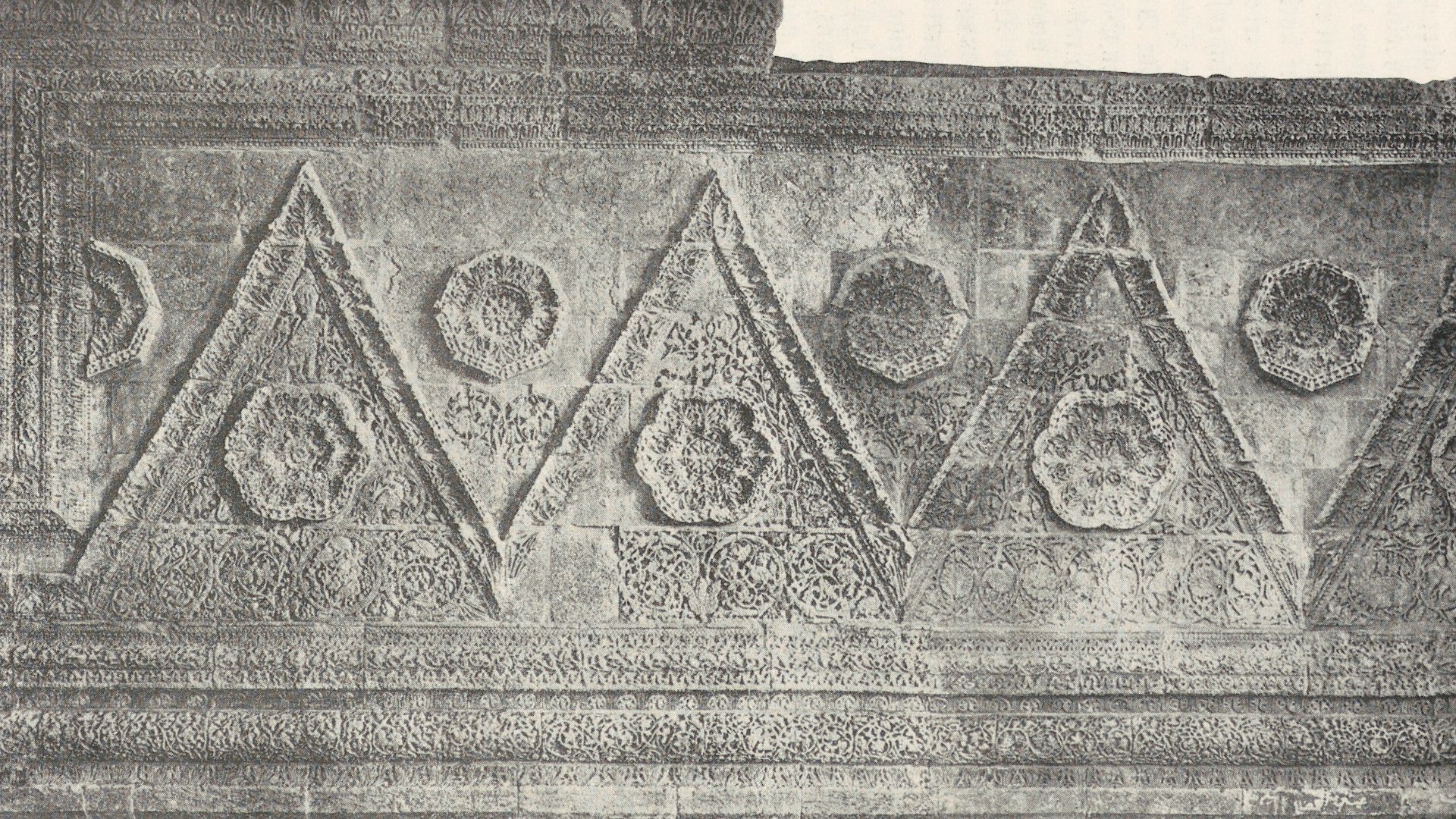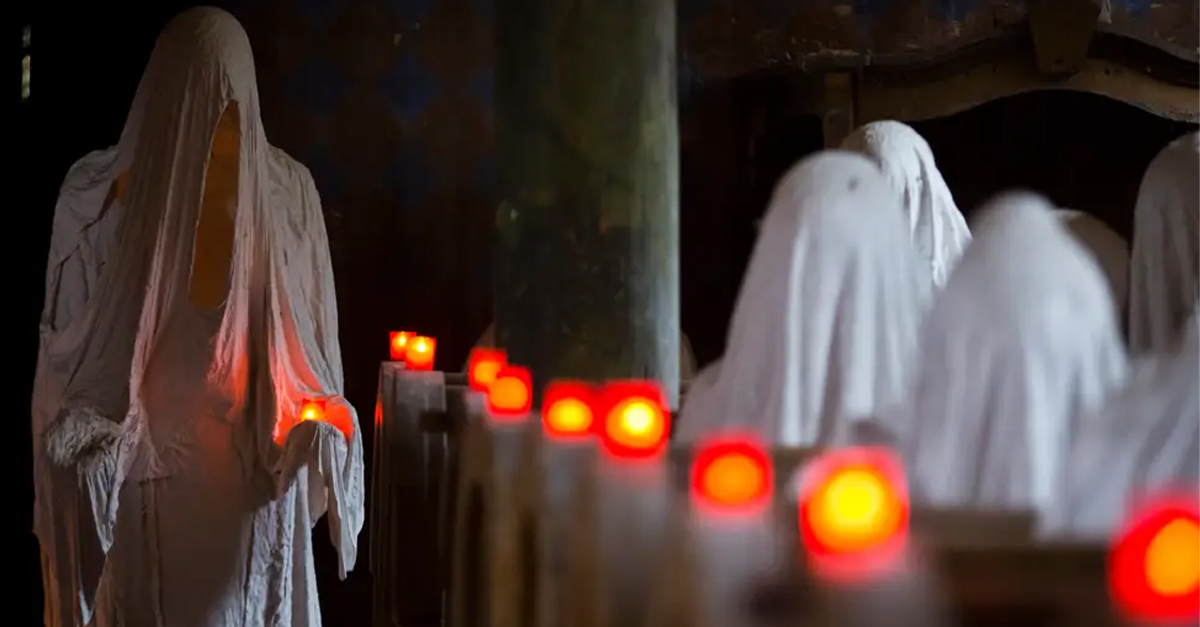A Pretty Strange Find
Something strange sits high in the North Caucasus mountains, so odd that even seasoned researchers paused when they found it. The Khara-Hora Shaft has no confirmed builders and no features that align with known ancient engineering.

A Remote Discovery In The Caucasus
Khara Hora was identified deep within the rugged North Caucasus, a region marked by steep ridges and isolated valleys. Its entrance lies miles from the nearest settlement, hidden among thick roots and weathered stones that disguised the opening until dedicated explorers began surveying the area.
 Riadchikova, Wikimedia Commons
Riadchikova, Wikimedia Commons
Legends That Pointed The Way
Local shepherds and mountain guides shared stories about a “place where the earth swallows secrets”. That directed early explorers toward an otherwise unremarkable slope. These accounts inspired adventurers to investigate the region more carefully, ultimately revealing the circular opening that marked the structure’s concealed entrance.
The Storytellers’ Magnet
Documentaries and podcasts amplify Khara Hora’s intrigue. Audiences are drawn to its blend of danger, legend, and engineering puzzles. Footage of rope descents and interviews with stunned researchers help transform the shaft into a recurring subject for filmmakers and long-form storytellers worldwide.
 JKizzieHumanities, Wikimedia Commons
JKizzieHumanities, Wikimedia Commons
Initial Exploration Efforts
Zhemukhov’s findings drew the attention of researchers who confirmed the shaft’s immense depth and impossibly smooth walls. Early teams used ropes and basic mapping tools to reach the first chamber. Then they realized quickly that this was not a natural cave but a meticulously engineered subterranean structure.
Chernobrov And Cosmopoisk Join The Search
The site gained wider recognition when Vadim Chernobrov (founder of the Cosmopoisk research group) launched systematic expeditions. His teams brought advanced equipment, documented the shaft’s geometry, and expanded early maps. Chernobrov’s involvement turned Khara Hora from a local curiosity into a serious archaeological mystery.
An Engineered Airflow System
Architectural analysis suggests the ventilation isn’t accidental. The shaft’s cylindrical shape encourages rising air, while smaller side tunnels may draw fresh air inward. Moisture and stale air appear to exit through unseen channels, which creates a surprisingly stable environment deep below the mountain.
Stone Blocks Of Extraordinary Scale
The walls and floors consist of seemingly tightly fitted rectangular blocks weighing up to 200 tons. These aren’t rough-cut stones. Many surfaces show sharp edges and polished faces so precise that thin metal cannot slide between the seams. To many, these details suggest remarkable workmanship.
Evidence Of Advanced Shaping
Chernobrov noted that some blocks appear molded rather than quarried, with surfaces too smooth for primitive tools. Their precision indicates knowledge of geometry and mechanical control far beyond what is typically attributed to early cultures in the Caucasus region.
Theories Of Ceremonial Use
Some researchers believe the structure once served a sacred function. The geometric layout and deliberate alignments hint at ceremonial importance. They propose that the shaft and its chambers may have acted as a sanctuary honoring deities unrecorded in surviving regional histories.
Parallels To Egyptian Engineering
Zhemukhov observed that the shaft’s polished faces and massive stone blocks resemble the Grand Gallery inside the Great Pyramid of Khufu, where stones are similarly large and precisely fitted. He suggested the structure may have served a technological or ritual function, possibly forming part of a much larger subterranean system.
 https://commons.wikimedia.org/wiki/File:Grande-galerie.jpg
https://commons.wikimedia.org/wiki/File:Grande-galerie.jpg
Rumored Nazi Interest
Reports surfaced of a swastika-like carving near the entrance, prompting speculation of Nazi-era activity. The Ahnenerbe, known for investigating remote sites perceived as having ancestral or occult value, allegedly showed interest in locations resembling Khara Hora’s unique and mysterious characteristics.
 Josef Strzygowski, Wikimedia Commons
Josef Strzygowski, Wikimedia Commons
Ahnenerbe’s Historical Pattern
The Ahnenerbe frequently sent expeditions into isolated regions searching for traces of early civilizations. Their documented travels through Central Asia make the Khara Hora rumor plausible, though no archival evidence confirms they reached the shaft or conducted research there.
 Background: Map created from DEMIS Mapserver, which are public domain. Koba-chan, Wikimedia Commons
Background: Map created from DEMIS Mapserver, which are public domain. Koba-chan, Wikimedia Commons
The Hazardous Descent
Exploring Khara Hora remains extremely dangerous. The vertical drop requires advanced rope work and precise coordination. A small mistake will lead to severe injury. Even trained teams move slowly, aware that the polished stone walls offer no natural footholds.
Hazards Beneath The First Chamber
Once past the initial drop, the dangers shift in ways that are harder to anticipate. Air thins in certain chambers, stray drafts twist through corridors, and pressure changes confuse seasoned teams. Local accounts speak of early explorers and modern researchers who never resurfaced.
Machining-Level Precision
Engineers studying the site noted tool marks eerily similar to those made by industrial machinery. Straight grooves and smooth faces challenge expectations for ancient construction. The level of refinement suggests methods far more advanced than stone chisels or primitive shaping techniques.
 Original uploader was Dave Bunnell at en.wikipedia, Wikimedia Commons
Original uploader was Dave Bunnell at en.wikipedia, Wikimedia Commons
The Burden Of Accessibility
Khara Hora sits deep within challenging terrain where the weather changes rapidly and trails deteriorate fast. Heavy equipment is difficult to move into the area, which limits research teams to what they can haul on foot. Many chambers remain untouched simply because reaching them is too dangerous.
Revealing An Engineered Interior
Chernobrov conducted detailed measurements inside the shaft to produce schematics that highlighted its symmetrical, chamber-like layout. Researcher Vladislavs Gusca later created a 3D model showing the structure’s striking vertical accuracy, which resembled an engineered installation rather than a natural cave. This strengthens arguments for deliberate construction.
Expanding The Toolkit
Modern expeditions now rely on drones and ground-penetrating radar to probe unreachable areas. These tools help identify collapsed tunnels and temperature anomalies that may point to the presence of buried rooms. The hope is to map safely without sending people into unstable passages.
 The Official CTBTO Photostream, Wikimedia Commons
The Official CTBTO Photostream, Wikimedia Commons
The Death Of Arthur Zhemukhov
In 2015, only a day after announcing a major new discovery at Khara Hora, Arthur Zhemukhov was struck by a car, and he passed on under circumstances colleagues described as deeply suspicious. His sudden passing shocked the research community and intensified speculation surrounding the site.
 W. Robert Howell from Charlotte, NC, United States, Wikimedia Commons
W. Robert Howell from Charlotte, NC, United States, Wikimedia Commons
The Passing Of Vadim Chernobrov
Two years after Zhemukhov’s death, Cosmopoisk founder Vadim Chernobrov—who had collaborated closely on Khara Hora research—passed on from cancer. His passing ended one of the project’s most determined scientific efforts and left the team without the investigator who had pushed its exploration the furthest.
A Project Marked By Loss
Beyond the departure of Zhemukhov and Chernobrov, three additional figures connected to Khara Hora research also lost their lives unexpectedly. Whether coincidence or something more troubling, the pattern halted further investigation. After these losses, progress stalled, and almost no new information about the structure has surfaced.
Searching For Buried Artifacts
Advanced sensors may detect metallic objects or sealed compartments beneath layers of stone and sediment. Cosmopoisk teams and collaborating engineers hope such artifacts will clarify the shaft’s purpose, builders, or age. Each new reading deepens curiosity about what remains beyond the mapped sections.
A Debate Over Origins
Geologists working with Caucasus regional universities and national geological surveys all share the consensus that the shaft reflects uncommon, yet perfectly natural conditions. They highlight similar formations in karst areas where pressure shifts and water flow create vertical cavities and expansive subterranean halls.
Yet that hasn't stopped storytellers from speculating.
 Joshua Elijah, Wikimedia Commons
Joshua Elijah, Wikimedia Commons
Features That Challenge Nature
Some points are difficult to explain naturally, such as the perfectly fitted stone blocks, geometric structures, ventilation channels, and synthetic-looking mortar. These features don’t match common cave formation patterns, which is why theories abound that Khara Hora was built deliberately using techniques now lost to history.
Echoes Of Shambhala
Tibetan and Eurasian lore describe Shambhala as a hidden realm of knowledge situated in remote mountainous regions. Some storytellers note similarities between those myths and Khara Hora’s unexplained architecture. These parallels inspire theories that the shaft may be tied to an unknown cultural or spiritual tradition.
 ZimZalaBim at English Wikipedia, Wikimedia Commons
ZimZalaBim at English Wikipedia, Wikimedia Commons






















